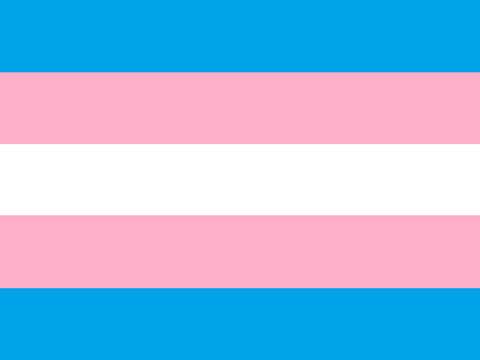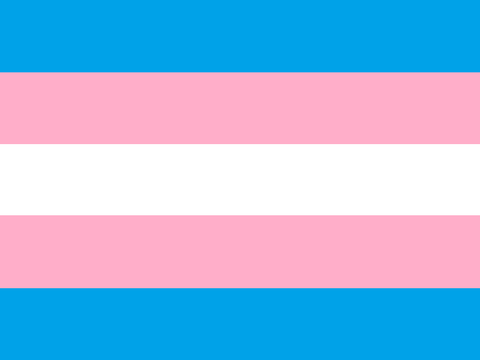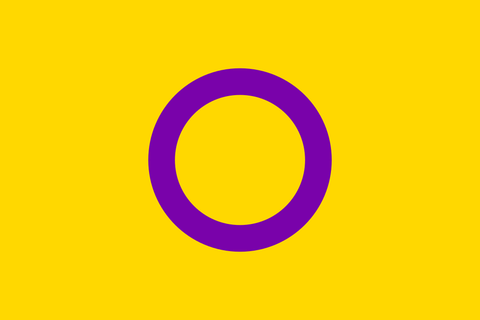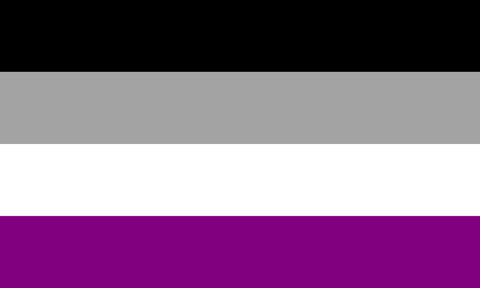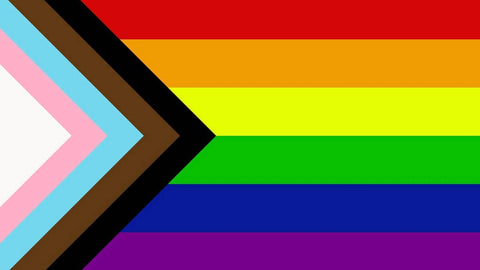“It hurts when I touch myself now” — Sam’s story of “conversion therapy” in Singapore
For nearly 30 years, an unassuming church in Singapore has been providing “counselling” services to LGBTQ+ folks. One man tells us how it destroyed his life.
| Updated on
Warning: This article describes psychological abuse, trauma, and suicide. Help is available.
In recent months, the topic of “conversion therapy” piqued public interest. Heated arguments were made for and against “conversion therapy” programmes, but few featured the voices of abuse survivors. Over the past few weeks, we’ve spoken to many brave individuals who were willing to lend their experiences and voices to this public discourse.
Sam’s story is the first in our 4-part series that reveals the reality of “conversion therapy” in Singapore. Read the other stories here.
* * *
Sam embarked on a journey of self-discovery in his 20s. He had been through many abusive relationships, and for reasons he couldn’t quite grasp, he’d always felt that something was missing in his life. Sam wanted to get in tune with his emotions. He wanted to heal.
At 26, Sam flew to Japan to attend a spiritual workshop. The workshop’s exercise was simple, but intense: attendees were paired up, and for 3 hours, each pair had to stare meditatively into each other’s eyes. The poetic beauty in this exercise wasn’t lost to him: staring into the windows of another’s soul would help him get in touch with his own.
Yet for hours, nothing happened.
Then his sensei came over and gently touched his chest, or what spiritual practitioners called the “heart space”. And in a single stroke, Sam’s inner soul broke loose with an explosive force. He started shrieking — so uncontrollably, in fact, that he had to be restrained by several workshop attendees. Anguish, anger, and confusion raced through his mind. It was an excruciating 30 minutes of raw physical reaction, as if years of emotions ripped through his body. Yet it was nothing compared to what was about to hit him in the months to come.
Because in that moment, something clicked into place. Sam suddenly recalled that he was a victim of “conversion therapy” over a decade ago. He finally understood why he’d always felt that something was missing, and why he felt so strongly that he had to heal himself. Deeply repressed and harrowing memories came rushing back like an avalanche.
Sam fought to stay alive over the next 3 months. He suffered from hallucinations, and would cry inconsolably for days on end. He would vomit uncontrollably. His body burned in pain. He wanted to end the suffering. He wanted to end his life. But in between the painful outbreaks, Sam found the strength to fight for his survival. He knew that to live, he had to find out more about what had happened to him. He began researching extensively about “conversion therapy”, and the more he researched, the more he recalled the lost years of his adolescence.
Slowly, his memories fell into place.
“Those few months were critical to me. I knew that if I didn’t make it, then that’s the end for me. I wasn’t sure if I was able to live with myself.”
Sam went through a lot at a young age. He learnt that he was gay while going through puberty. And through interactions with his closest family members, he learned that it was something he needed to get rid of.
When he came out to his mum at 13, she told him that she expects a grand funeral when she dies. It was her cold, indirect way of telling him that she expects him to bear children and grandchildren for her. When Sam turned to his aunt, she called him derogatory names and told him that people will not accept him if he continues to be gay. The message from his family was clear: turn straight, or else.
So at 15, Sam scoured the internet for answers about his sexuality. In the age of dial-up internet, genuine LGBTQ+ content was hard to come by. The information that he found about STDs scared him — HIV was still called the “gay virus” back then. Sam started getting desperate. He needed to find a way to turn straight.
And then he found a solution — or so he thought.

Sam began attending a “conversion therapy” programme offered by a local church when he was 15. It marketed itself as a counselling service that could help people who were “struggling with unwanted same-sex attraction”, and sounded exactly like what Sam was looking for. Even though he only signed up for their counselling services, he felt compelled to attend their church services as the years went by. His family never knew that he was participating in “conversion therapy” sessions; they were more concerned that he was converting from Taoism to Christianity.
Perhaps the scariest part about the “conversion therapy” programme was how, to 15-year-old Sam, it just felt right. Sam’s 1-on-1 sessions with his counsellor felt like normal counselling sessions. Sure, scripture was quoted a lot in their hour-long sessions, but to Sam — and anyone who desperately wanted to turn straight, for that matter — everything seemed to make sense. Because in a world full of rejection, the programme claimed to provide all the answers.
“I was pumped and really motivated to turn straight, and I thought I was on the right track. But I only realised much later that I wasn’t just suppressing my attraction to guys — I was no longer participating in life.”
Sam’s memories about his counselling sessions are hazy, but their core message remains clear in his mind: you’ll go to hell if you’re gay. It was a powerful and terrifying message, and it fueled Sam’s desire to continue with the programme. He didn’t know back then that his sexual desires were innate and perfectly normal, so he confided his feelings with his counsellor and followed everything he was instructed to do. For a long time, everything he heard in his counselling sessions made him feel like turning straight was a real possibility.
Celibacy was a strong mandate of the “conversion therapy” programme. Sam’s counsellor told him many times that he would go to hell unless he stopped masturbating. He told Sam that it was wrong and sinful to have sexual desires. And as an impressionable teenager going through the peak of puberty, Sam absorbed and believed everything his counsellor told him.
Throughout his 4 years in the programme, Sam suppressed his desires and took things to the extreme. He would hold tightly onto his bed frame every night before going to bed to prevent himself from touching his body. It was a physically and mentally exhausting exercise, but Sam managed to push through every night for 6 consecutive months before he succumbed to his desires. He wouldn’t know this until years later, but this extreme psychological conditioning left him with a debilitating inability to touch himself.
“That’s how fearful I am on the inside, even now. It just hurts so much when I touch myself.”
In one church session, the pastor discouraged churchgoers from listening to secular music. Only Christian music should be allowed in their lives, the pastor declared. The next week, Sam brought his entire music CD collection to church, and watched it being burnt and destroyed. Sam was so enthralled by the programme’s promises that no physical coercion was required to get him to engage in such extreme activities. To him, listening to everything they say was the only way to not end up in hell.

There were a few reasons that ultimately made Sam leave the programme after 4 years. First of all, nothing worked. Sam knew that he was still gay, and that all he managed to do was to suppress his innate desires and convince himself that he isn’t worthy of love. He was also harassed by a cell group leader, but nothing seemed to be done about it after he raised this up to the church leadership. And in an attempt to negotiate some joy back into his life, Sam asked a church friend if God would accept him if he were to be in a loving gay relationship, but abstained from sex for life. The answer: an unequivocal no.
When Sam left the programme at 19, he wasn’t a changed man — he was broken. He left not because he realised that their teachings harmed his mental health, but because after 4 years of trying, he has resigned to his fate of going to hell.
“‘Conversion therapy’ has destroyed my life. I’ve never been happy since. I didn’t allow myself to feel joy. I was convinced that I will go to hell.”
Sam turns 38 this year. And in the last decade or so, he’s been to hell and back.
After spending thousands of dollars in medical scans, Sam was diagnosed with fibromyalgia. In simple terms, he experiences chronic physical pain induced by his extreme psychological trauma (side note: psychological trauma isn’t the only factor that could induce symptoms of fibromyalgia). These painful outbreaks aren’t just unpredictable, but also incurable. His chest would tighten and he would gasp for air; his face would twitch suddenly and uncontrollably; he would suffer from the inability to speak; he is often fatigued and would suffer from migraines.
Sam also faced considerable financial challenges over the last couple of decades. There were months when Sam was unable to get out of bed. His inner demons would take control, and he would find himself once again fighting for his life. Because of this, Sam had been in and out of jobs. This, coupled with his expensive medical treatment and therapies, set his finances back considerably.
It would be nice if we could end Sam’s story on a positive note. But the truth is that even though Sam is a fierce survivor, his experience with “conversion therapy” still affects him decades after the sessions have ended. Sam isn’t ready to date yet, because he thinks that he carries too much emotional baggage for any relationship to work. He continues to face difficulties fully accepting his sexuality, even though he understands that there’s nothing wrong with being gay. And he continues to sleep with his arms wide apart, because physical contact still makes his body burn in pain.
Let this be clear: “conversion therapy” practices exist in Singapore. Many of these programmes continue to showcase “success” cases without acknowledging, or perhaps understanding, how “conversion therapy” can irreparably damage a person’s psychological and physical wellbeing.
According to the United Nations, any attempt to change or suppress someone’s sexual orientation or gender identity is a form of “conversion therapy”. Many international psychiatric organisations have condemned “conversion therapy” practices because the medical consensus agrees that they not only don’t work, but could cause mental harm to participants (page 115). Taiwan has fully banned “conversion therapy” practices, while Germany has done so for minors. Other countries such as Canada, Israel, New Zealand, and the UK are considering legislation that would make them illegal.
In June 2021, the Singapore Psychological Society — for the first time since its inception in 1979 — officially discouraged the use of “conversion therapy” on LGBTQ+ individuals. It acknowledged the harmful effects of such practices, and recommend medical professionals to use therapy that affirms the individual’s orientation or identity.
Yet “conversion therapy” remains legal in Singapore. Many teenagers like Sam will continue to enrol in programmes that psychologically condition them to suppress their innate sexuality. Most of them would emerge from the programmes with their sexuality unchanged, but mental health deeply affected. Some of them will kill themselves.
Take action against “conversion therapy” today
“Conversion therapy” is a public health issue. We should continue to defend the right of people to practice their religion and beliefs, yet strike a balance to ensure that the health and safety of individuals aren’t disproportionately affected by any practice, especially those that are known to cause deep harm.
We’ve prepared an email template that you can send to relevant ministries (Health, Law, Home Affairs), as well as members of the opposition party, asking them to protect teenagers from the harms of “conversion therapy”.
If the button doesn’t work for you, use this document instead.
We propose the following regulatory changes to help safeguard minors from the harm of “conversion therapy” in Singapore:
- Require any person who practices “conversion therapy” to give participants a warning message that “conversion therapy” has no scientific basis and may not work. This would be similar to how tobacco products are mandated to contain health warning labels.
- Prohibit advertisements of “conversion therapy” practices in Singapore. This would be similar to how tobacco products are barred from all forms of advertising in the country.
- Prohibit medical professionals from suggesting, endorsing, or prescribing “conversion therapy” practices. Although the Health Minister has said that medical professionals are expected to practice according to “evidence-based best practice and clinical ethics”, this stance isn’t a prohibition of the harmful practices of “conversion therapy”.
- Amend regulations to close the loophole on domestic abuse laws, by explicitly categorising “conversion therapy” as a form of domestic abuse.
- Amend regulations to explicitly include “conversion therapy” as a form of ill-treatment under our child abuse laws.
- Outlaw “conversion therapy” practices.
If the button doesn’t work for you, use this document instead.

Help is available
If you’re currently struggling with your sexuality or gender identity, help is available.
A social service helpline that supports LBTQ+ women in Singapore.
- WhatsApp: +65 8788 8817 (check operating hours here).
An LGBTQ+ support organisation that provides affirming counselling services.
- WhatsApp counselling: +65 8592 0609 (check operating hours here)
- Email counselling: CARE@oogachaga.com (typically responds within 72 hours)
A local trans shelter that runs trans-focused services.
- Temporary stay shelter: Find more details on their website
- Professional counselling: Find more details on their website
An emergency helpline that provides confidential emotional support to individuals facing crises.
- 24-hour hotline: 1800 221 4444
- Email counselling: pat@sos.org.sg
* * *
This personal story was contributed by Sam, who has been struggling with the aftermath of “conversion therapy” for the last 2 decades. We withheld his real name to protect his identity and safety. The illustrations in this article do not represent how Sam looks in real life.


